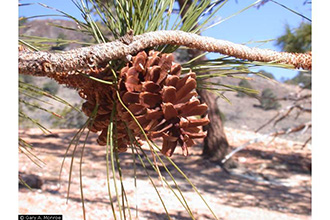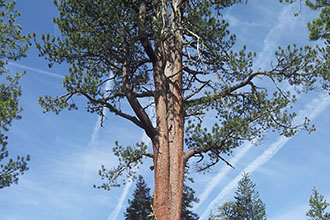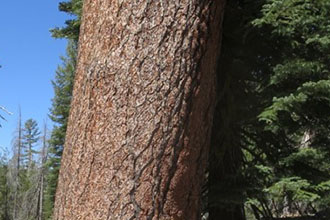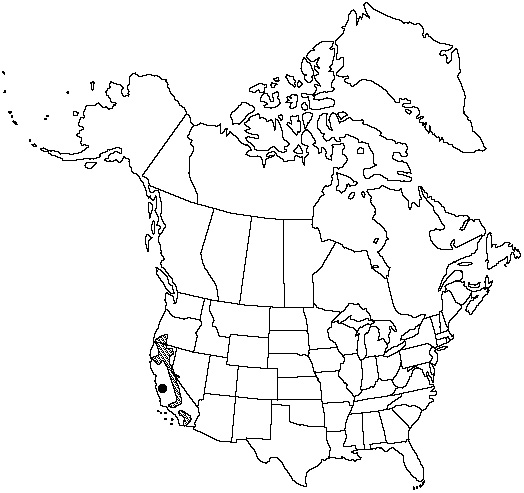Taxonomy: Kingdom - Plantae (plants). Subkingdom - Tracheobionta (vascular plants). Superdivision - Spermatophyta (seed plants). Division - Coniferophyta (conifers). Class - Pinopsida. Order - Pinales. Family - Pinaceae (pine) Genus - Pinus L. (pine). Species - Pinus jeffreyi Balf. (jeffrey pine).
Ecology: Jeffrey pine is a large, slow-growing, long-lived conifer. Trees often live 400 or 500 years. In Jeffrey pine/huckleberry oak vegetation in central Sierra Nevada, the oldest Jeffrey pine tree was an estimated 631 years old. Jeffrey pine may reach 60 m tall, and diameters of up to 2.5 m are reported. Crowns are rounded or long and symmetrical. The Jeffrey pine trunk is normally straight with thick, large plates of bark separated by deep furrows. Needles are 8-28 cm long and most often in bundles of 3, but bundles of 2 are possible.



